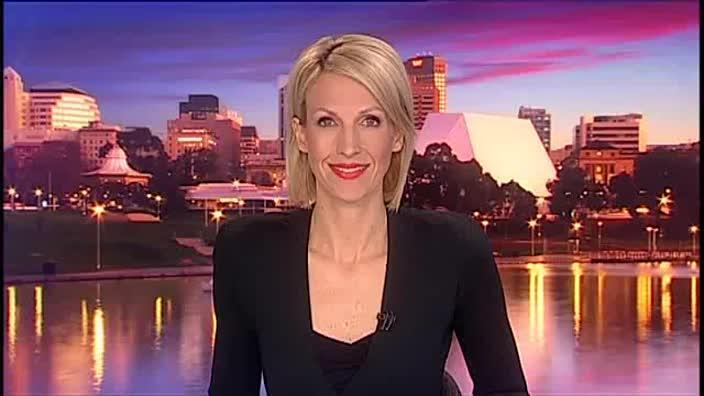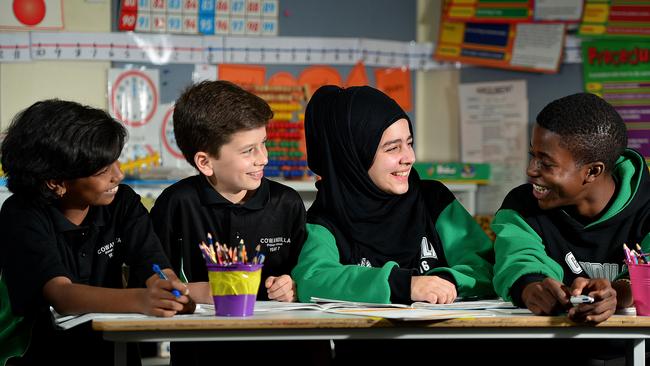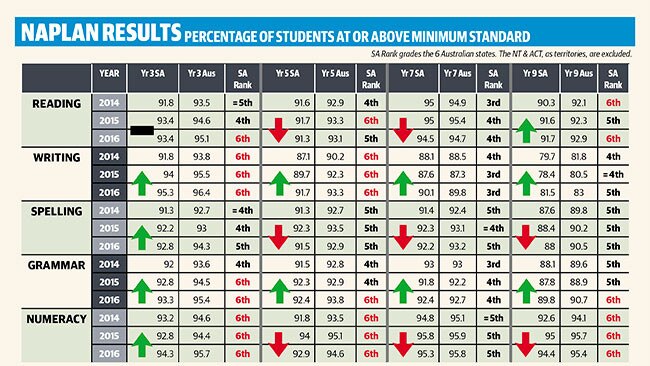SA records gains in NAPLAN results but still worst performing mainland state
SOUTH Australian students have recorded “signs of improvement” in NAPLAN literacy and numeracy tests for the second year in a row, but the state remains the worst performing on the mainland.

SOUTH Australian students have shown “signs of improvement” in NAPLAN literacy and numeracy tests for the second year in a row, but the state remains the worst performing on the mainland.
Schools recorded better mean scores in 13 of 20 categories, including seven where the gap behind other states’ results narrowed in consecutive years.
The state Education Department said gains were made against other states in all test domains for Years 7 and 9.
The highlight was a “significant lift” in Year 3 persuasive writing results — the biggest improvement recorded anywhere in the country.
The department, which also pointed to higher participation rates in all year levels, attributed the gains to initiatives under its Numeracy and Literacy Results Plus program.
It also said “rigorous external reviews of schools and annual performance reviews at the school partnership level” were delivering gains.
Chief education officer Jayne Johnston said, “I’m acutely aware that in South Australia we experience different challenges through high levels of socio-economic disadvantage, so I commend the efforts of students for making progress and staying committed to their studies.”
State Education Minister Susan Close said she was not content on where SA sits, but said the department was doing everything to close the gap.
She said the state had a higher proportion of students from a low socioeconomic background, and they usually don’t do as well in school.

“In the very disadvantaged families, children tend to arrive at school with a smaller vocabulary, with a lower understanding of numeracy,” she told ABC 891.
“That’s why pre-school is so important. We offer pre-school from the age of three for some students and I’d like to see that expanded.”
She said the Gonski funding had been focused on improving literacy and numeracy, with funding to increase in the next two years.
“Schools are starting to see ... competence of the students,” she said.
The Advertiser’s analysis shows that, compared to last year, higher proportions of SA students reached the national minimum standards set for the tests in 11 categories.
But SA mean scores fell below national averages in 19 of 20 categories, the only exception being Year 7 writing. Compared with national achievement rates, lower proportions of SA students reached the minimum standards in 19 categories. Year 3, 5, 7 and 9 students sit the tests each year in five areas: reading, persuasive writing, spelling, grammar and punctuation, and numeracy.

Federal Education Minister Simon Birmingham said “flat” results across the country highlighted the need for “evidence-based” policies in schools.
He released analysis showing Commonwealth funding for SA schools had risen 13.5 per cent over the past four years.
Overall, mean NAPLAN scores were up 0.24 per cent in reading, 0.47 per cent in writing and 1.63 per cent in numeracy over the same period, with similar low gains in other states.
“Today’s results once again show that, despite significant funding growth, we are not getting sufficient improvements in student outcomes,” he said.
“This NAPLAN data clearly shows that while strong levels of investment in schools are important, it’s more important to ensure that funding is being used on initiatives proven to boost student results.”
NAPLAN has been run by the Australia Curriculum, Assessment and Reporting Authority since 2008.
Chief executive Robert Randall said nationally from 2015 to this year results were “plateauing”.
“We are concerned that, on a national level, the results have shown no significant improvement across the domains and year levels from 2015. Plateauing results are not what we should expect or assume from our education systems,” he said.
